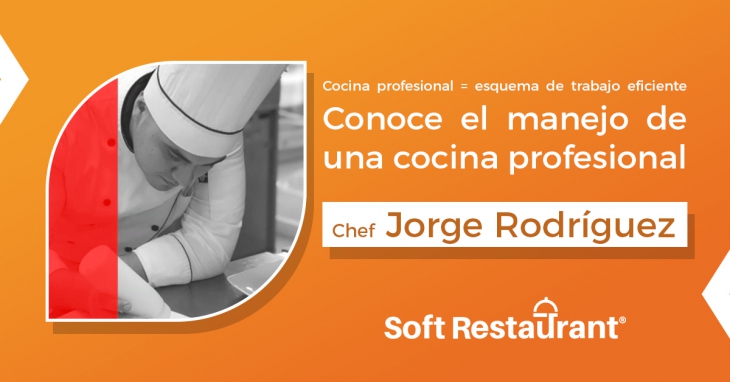If you did not have the opportunity to follow this useful Webinar live, today we have a summary of it as well as the link to see it again. Through this conversation we had with him, we learned a little about the keys to making decisions in restaurant businesses, among many other things.
Jorge Rodríguez, part of the traditional Chiapas cuisine platform MUMO and chef at the Aroma de Raíz restaurant, has dedicated much of his career to finding the optimal balance between costs, flavor and tradition. The importance of this type of dialogue, which is central to business, is that it helps the industry to become strong.
Professional kitchen = efficient work scheme
Integrating a general work scheme is essential to identify needs and opportunities in the kitchen, one of the areas with the greatest deficiencies in the restaurant industry. This scheme, added to a better communication between the kitchen part and the administrative part, will make it possible to solve almost any problem in the restaurant.
How to achieve optimal performance?
- Strategy alignment: everyone should follow the work guidelines.
- Direct communication: save time and avoid triangulations. Remember that time is money.
- Joint management: not only is the warehouse manager responsible for the kitchen running "well", but it is everyone's responsibility.
How to "shield" the kitchen, to avoid problems?
- Focus production efforts.
- Propose a clear management scheme.
- Improve communication and dialogue between the restaurant areas.
Never forget that the better the results in this administrative process, the higher the profits. In turn, generating more profits has a direct impact on the salaries of our staff, the restaurant's infrastructure and the training / certification of human talent and the facilities themselves.
Keys to the general scheme of work in a kitchen
The general scheme of a commercial kitchen is made up of a work team, where each position is assigned based on the person's specialty. There are staff who are very good at making sauces, and staff who are good at leading, for example, but what will the general scheme be?
The kitchen manager should go first, sort of like the executive chef. Then we would have the command and assembly team, where there are managers of each type of food or kitchen area, depending on the size. Finally the production team, who cut the vegetables, put together the sauces, etc.
The functions of each position can be duplicated, but this has to be verified very closely to avoid misunderstandings: coordination (and communication) of is of the utmost importance. The tip to carry this out in the best way is not to use such complex speeches but to delimit everything in a clear and simple way.
Translating the "kitchen life cycle" into higher profits
Once the kitchen is in order, the point of sale should not be neglected. Control will be key to achieving balances in sales averages and this, in turn, will also allow us to keep the warehouse, purchases and the relationship between inventory and production in order.
Much of the audience that accompanied us during the webinar It already has an electronic point of sale system to support this final part of control: both in the warehouse, in the kitchen and in the administrative part. The interesting thing is that we all agree: the help that technology offers to restaurants is extremely useful in saving time and increasing profits after a few months of implementation. Don't miss out on the test!


